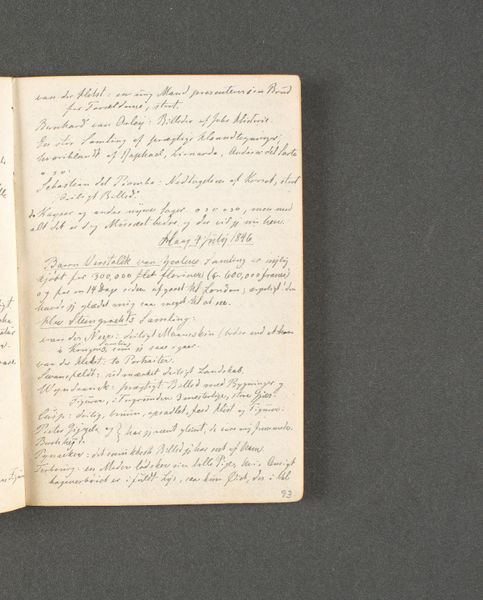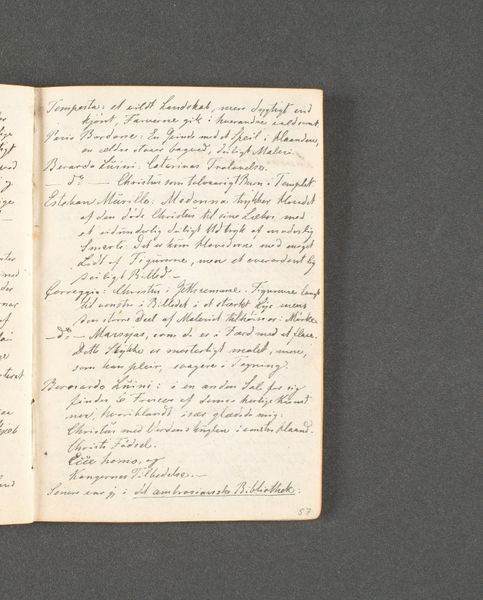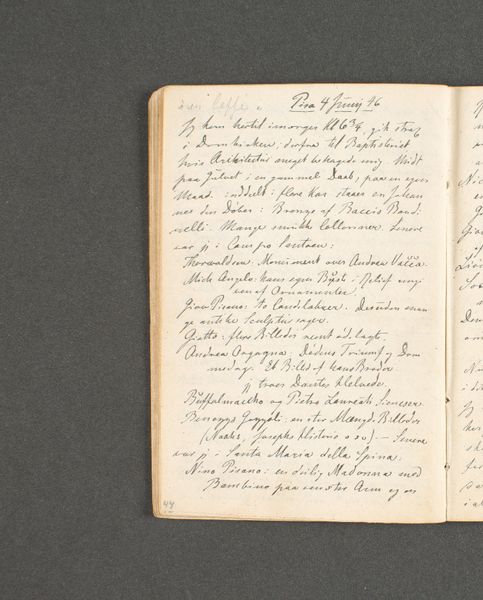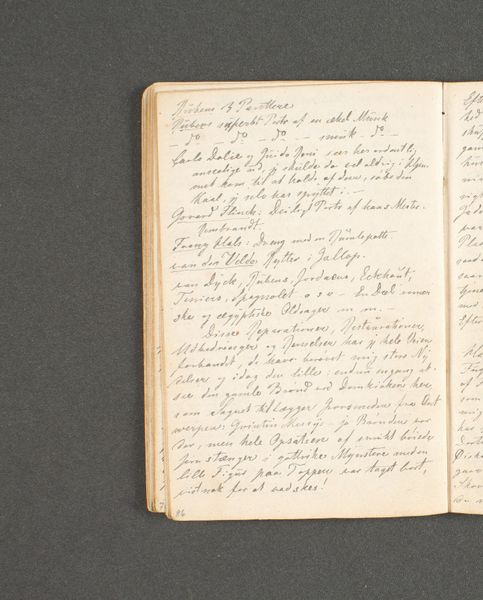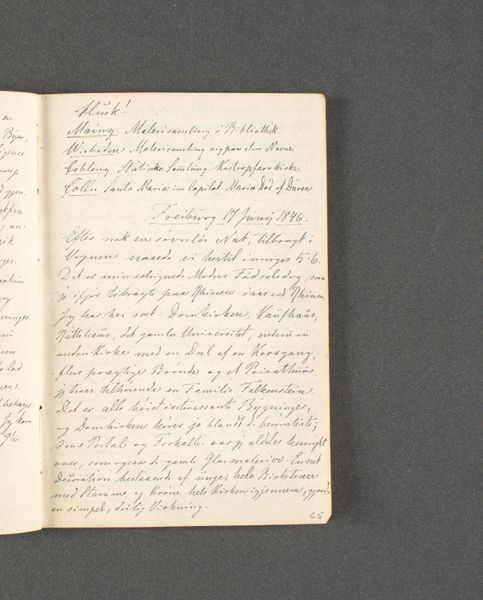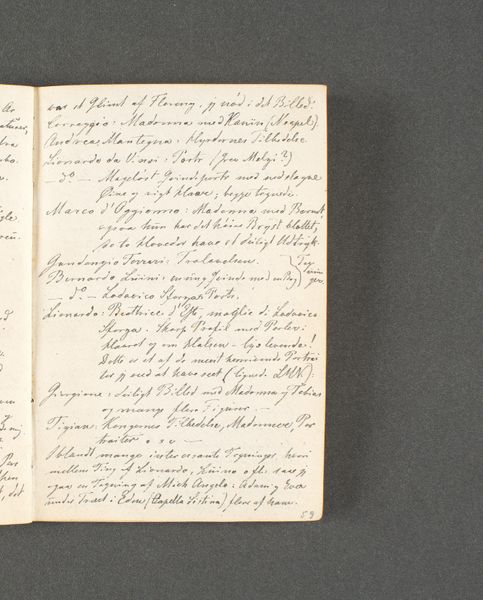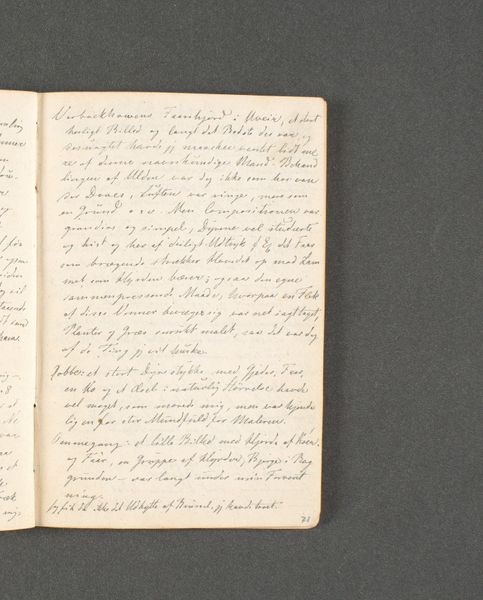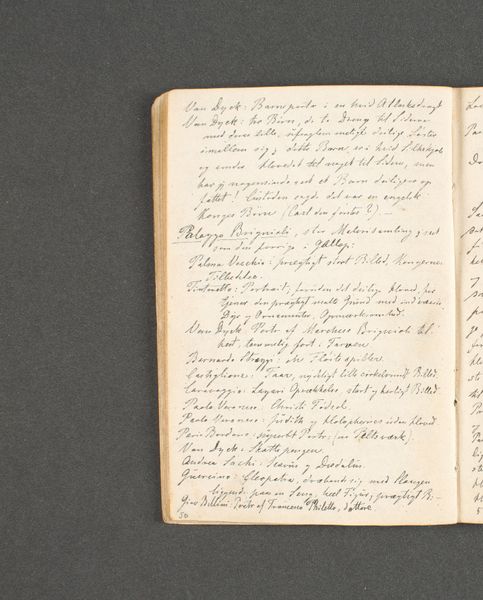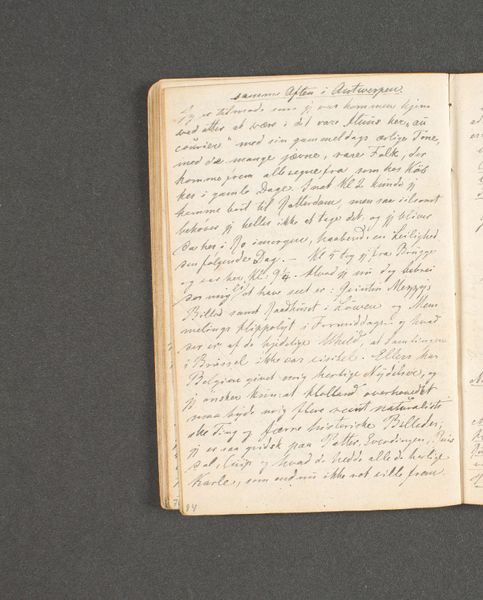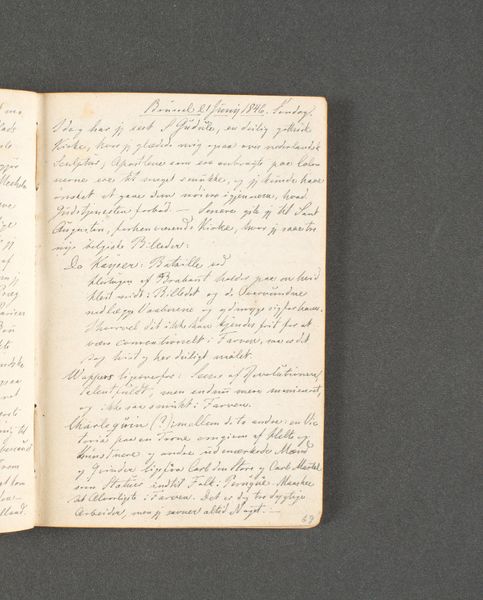
drawing, paper
#
drawing
#
sketch book
#
paper
Dimensions: 131 mm (height) x 89 mm (width) (bladmaal)
Curator: Ah, this page comes from Johan Thomas Lundbye’s travel journal, specifically from his time in Brussels in 1846. It’s a drawing on paper, and what strikes me is the immediacy, the sense of being right there with him as he jotted down his thoughts. Editor: My initial impression is that it is kind of a puzzle. The dense script almost blends into the page, becoming an abstract field of marks before resolving into words. It makes me think about the inaccessibility of language, and how history often hides behind veils of text. Curator: That’s interesting! For me, the script has a life of its own, like little dancing figures across the page. He was primarily a painter, but you can tell he's really flexing his observational skills here, capturing what he saw, what he experienced on his travels. Editor: Travel journals, historically, have been such tools of empire and domination. What's he leaving out? Whose perspectives are missing? I find myself wondering about the power dynamics inherent in the act of observation. Does he mention anyone, or is it more a monologue about himself? Curator: You're right, it’s essential to acknowledge that context. He probably wasn't writing for us but for himself—these were notes, observations for future paintings perhaps. He’s reacting to the art that he’s viewing, listing artists, “Willeme Middelaltthetize, Tigurer par on Trappe” – you see him attempting to absorb so much in so little time. Editor: It makes me reflect on the contemporary pressure for constant documentation through social media—how we're always framing experiences, narrating ourselves. Is Lundbye's journal really that different? Is it not also a curated performance of self? Curator: It might be, but I feel there's also an unguardedness. There's no immediate audience—it’s as raw and unfiltered as can be expected from that time, right? Still, he writes about his travels and art, his mood is present in that cursive, in his quick evaluations... He's so lively. Editor: Ultimately, though, the closed book represents something impenetrable about the past, maybe. These are hints, echoes, fragments of a life, and we are attempting to interpret based on what society has provided. There's a fundamental lack that speaks to our relationship with history itself. Curator: Absolutely, there's an inherent unknowability. Still, even these small windows can bring us closer to understanding an artist and his era and maybe that is its own reward. Editor: And, indeed, our own situatedness, too. Thank you!
Comments
No comments
Be the first to comment and join the conversation on the ultimate creative platform.
